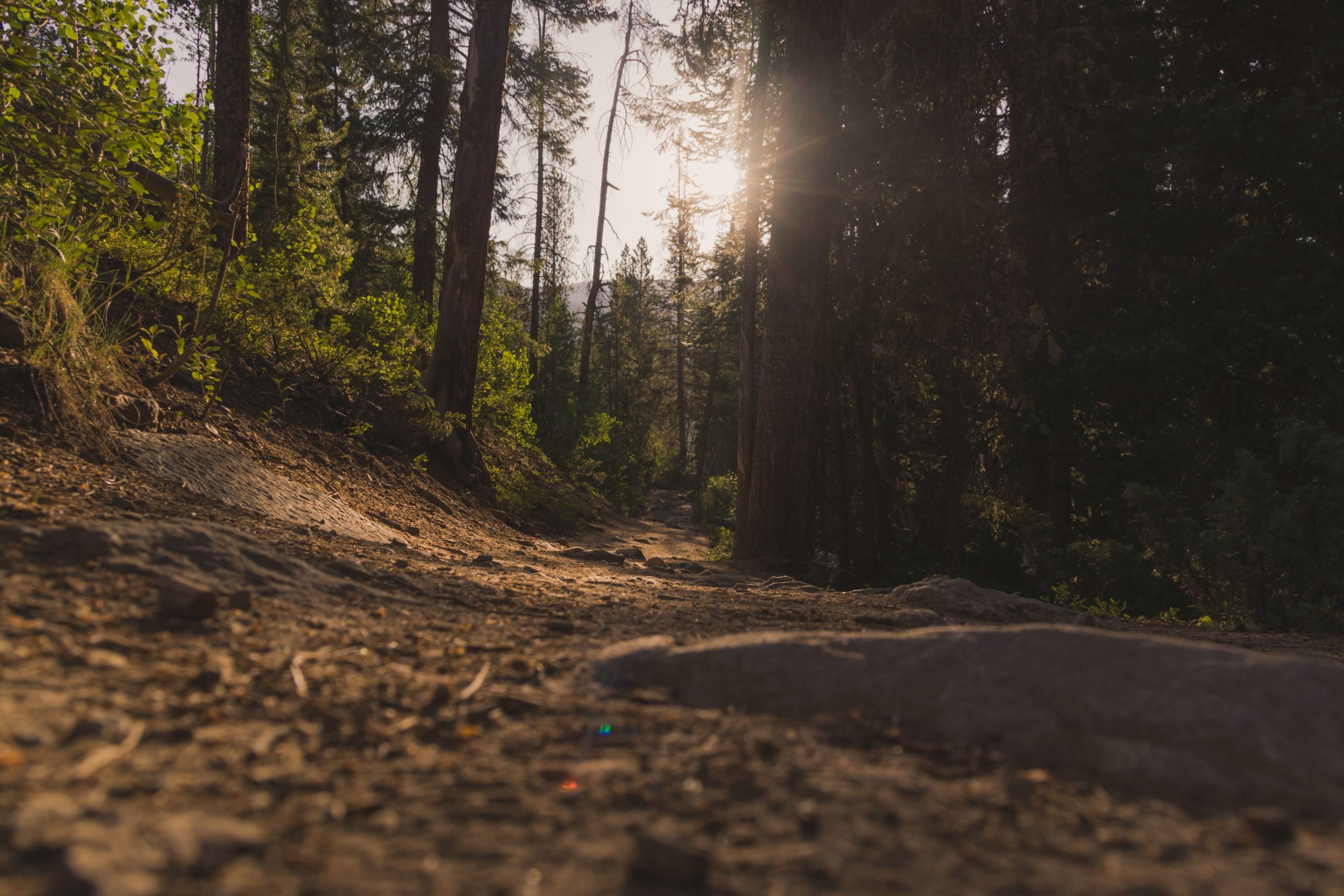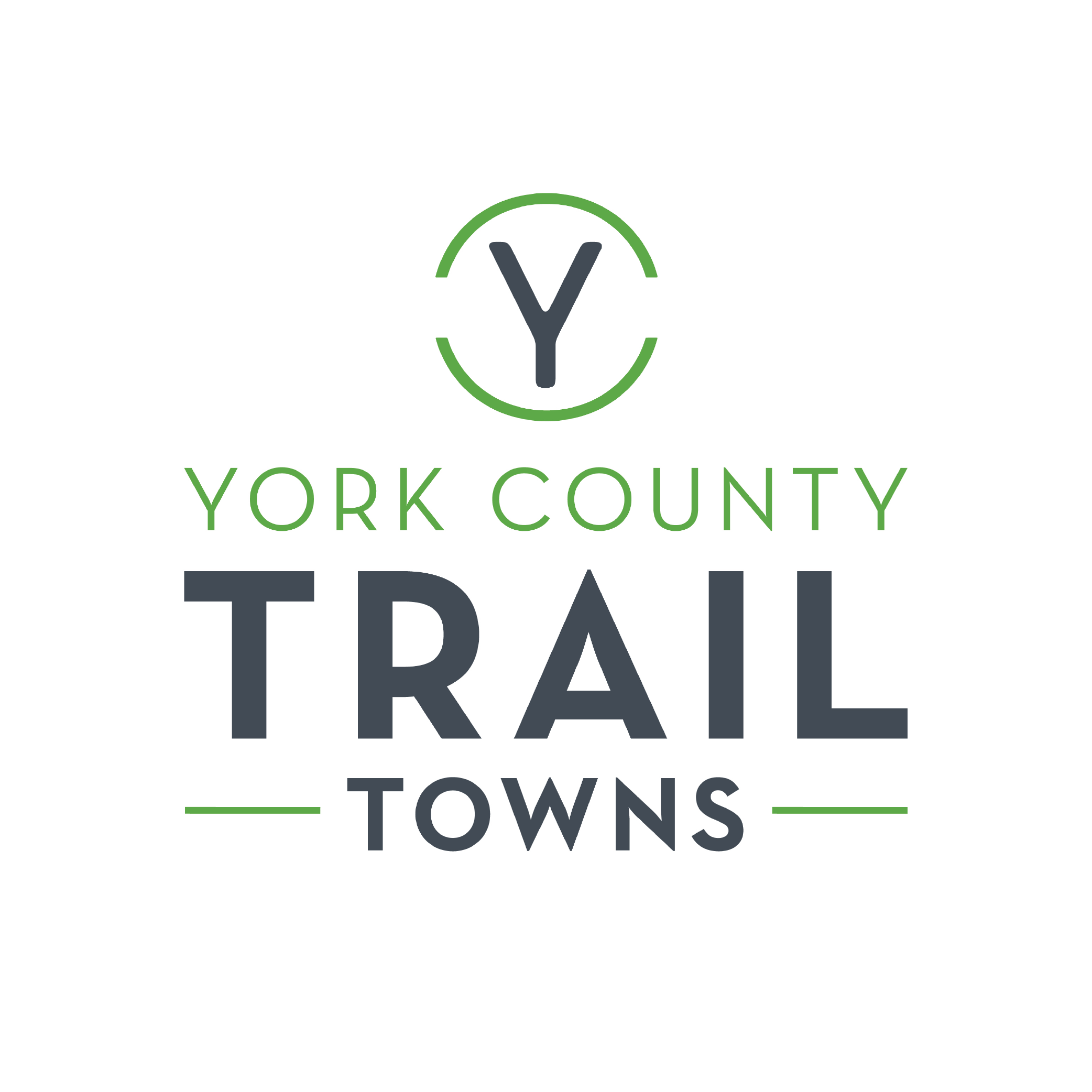York County Economic Alliance is launching the “Trail Towns Program”, to leverage the York Heritage Rail Trail as a platform and driver for economic development in towns located along or near the popular multi-use trail. The pilot program will include 5 towns: York, Seven Valleys, Glen Rock, Railroad, and New Freedom. The intention is to expand the program as more of the trail is built.
Partnering with the York County Department of Parks, the York County Rail Trail Authority, Explore York, and our municipal partners, the Trail Towns Program is a collaborative process with outreach to local governments, residents and business owners in order for each town to reach its potential as a vibrant hub for trail users. By enhancing each town as a trail user-friendly destination and creating a cohesive Heritage Rail Trail experience, visitors will stay longer and spend more money, it will expand existing businesses and attract new ones.
What Is a Trail Town?
Trail Towns are communities adjacent to public trails that choose to embrace the trail as an opportunity for economic growth and improved quality of life. Trail Towns programs use an integrated and asset-based, economic development approach that considers each town’s existing resources, it’s character and local businesses to develop a memorable and inviting trail experience for users including residents and out of town visitors alike.
The Trail Towns approach uses a business model based on the highly successful initiative developed by the Progress Fund, a non-profit community development financial institution that focuses on new or expanding tourism businesses along the Great Allegheny Passage, a 150-mile trail connecting Pittsburgh, PA to Washington, DC. The Progress Fund’s success has spurred similar efforts along trails in Pennsylvania and across the country.
Benefits of Trails
Economic Benefits
There has been extensive research and study on various aspects of the economic impacts of multi-use trails; notable among them is the Rails to Trails Conservancy (RTC) work, RTC has undertaken numerous studies and created a model for assessing spending patterns of trail users.
The RTC studies break trail user spending into three categories: “soft goods” (typically food or drink), “hard good” (bike parts, clothing, shoes, etc.) and lodging. Based on the 11 trails reviewed, over 67 % of respondents purchased soft goods while on the trail averaging $19.75 per trip; the Pine Creek Trail in north-central Pennsylvania saw the largest average in “soft goods” expenditure of over $38 per trip. The “hard goods” category had a larger percentage of respondents, with 82% of respondents buying hard goods related to the trail representing an average of $417.82 per user per year.
Reported spending on lodgings is modest because of most trails didn’t experience many overnight stays but across the 11 trails, 9% of respondents paid for overnight lodging near or along the trail with an average spend of nearly $100. It is assumed that a significant percentage of users stayed in campgrounds, lowering the average spending amount in this category.
Employee Recruitment and Retention
Recent research and media reports highlight the importance of quality of place and quality of life for employee recruitment and retention alike. It is also an important consideration for new business recruitment and existing business expansion. On a broader scale, the availability of trails is seen as a key influencer in people’s decision to select a community to live.
Business Recruitment
A 2003 study by researchers at the University of North Carolina found through a literature review that quality of life is an increasingly important consideration in determining business location. Most economists regard the quality of place/quality of life as influencing business locations indirectly, through the preference of workers. Workers prefer places where they expect to enjoy a high quality of life that embraces sociability, recreation, and alternative lifestyles.
Health & Wellness Benefits
Pennsylvania has the 24th highest adult obesity rate in the nation, and the 14th highest obesity rate for youth ages 10 to 17 a clear indication that Pennsylvanians (and Americans in general) don’t engage in physical activity as much as we should. In fact, only 50% of …
TRANSPORTATION BENEFITS
A rail trail, with its easy-to-cycle grades and off-road character, is an excellent transportation option with several transportation-specific benefits. As a transportation corridor, the trail provides accessible and safe routes for people to use for work trips or errands, trips to community facilities like …
CONSERVATION AND ENVIRONMENTAL BENEFITS
Rail trails are linear greenspaces with all the expected and traditional conservation benefits of open space. They help preserve important natural landscapes, provide needed links to create wildlife corridors between fragmented habitats and offer important …
HERITAGE PRESERVATION/COMMUNITY IDENTITY
Rail trails also represent an opportunity to celebrate the heritage and history of towns located on the trail. The preservation and restoration of historic buildings and other man-made structures (like rail tunnels, bridges, etc.) can enhance a community’s …
SOCIAL CAPITAL BENEFITS
Expanding on the theme of the improved community identity and civic pride is social capital. Social capital is the effective functioning of social groups in a place through interpersonal relationships, a shared sense of identity, and a shared understanding that leads to a positive product, benefits, or …
EDUCATION BENEFITS
Trails of all kinds offer layers of benefits, an often overlooked one is the opportunity to educate its users. Providing signage, programs or events that present information about natural resources, the history of the area, or cultural resources along the trail or a specific site enriches the personal …
Want To Learn More?
Contact Silas Chamberlin to learn more and get involved.


